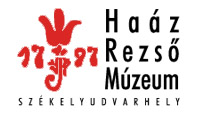Kovács Petronella (szerk.): Isis - Erdélyi magyar restaurátor füzetek 20. (Székelyudvarhely, 2020)
Focht Anna: Gorka Géza padlóváza restaurálása
Abstracts Eszter Tóth - Bence Soós - Emőke Baranyai - Annamária Fazekas - Rebeka Kovács - Julianna Máté The conservation of bronze wheels of a cauldron-wagon from the Iron Age in the Applied Arts Object Conservation Program at the Hungarian University of Fine Arts The paper is presenting the restoration of four wheels of a cauldron-wagon dated to the Iron Age (8-7th centuries BC) from the collection of the Hungarian National Museum (HNM). The work was carried out in the 2018-19 school year with students in their second year in the Applied Arts Object Conservation Program organized jointly by the Hungarian National Museum and the Hungarian University of Fine Arts (HUFA). The course was held by Eszter Tóth and Melinda Nagy, metal-goldsmith conservators of the Hungarian National Museum, the conservation tasks were achieved by Emőke Baranyai, Annamária Fazekas, Rebeka Kovács and Julianna Máté. From an archaeological point of view Gábor János Tarbay (archaeologist, HNM) helped the students’ work, the historical background in this paper was written by Bence Soós (archaeologist, HNM). The wheels were got into the FÍNM in 1901 as a bequest of the painter, István Delhaes. During the 13-12th centuries BC the first cauldron-wagons of the early Iron Age had turned out in North and Middle Europe, but from the 8th century they concentrated in the Southern Alps and Italy. Taking into account the number of spokes, the width of the tyre and the shape of the hub the formation of the wheels shows strong similarity to the wheels of the cult/ cauldron-wagon of Strettweg, a most emblematic piece from the late Iron Age. Their function may be closely related to the sacred and libation ceremonies connected with the aristocracy. The upper part of the cauldron-wagon from the collection of Delhaes was lost, only the four casted wheels (o: 14 cm) with 8-8 spokes were remained. Two of them were complete; the other two were in pieces with more or less defaults. The identity of the shapes considering the position of the spokes, the distance between them, and the hole through the hub refers to the same mold. The identification of the materials of each wheel was carried out with a portable X-ray fluorescence spectrometer (p-XRF). The analysis showed a clear difference in the elemental composition of the first and the second two wheels all made by tin-copper alloy. The thick waxy coatings on the objects had indicated a former conservation treatment. The third and the fourth pieces had broken and incomplete, the fragments had been fixed by adhesive, solder, and brass rings around the joinings. About two-thirds of the fourth wheels had been refilled by casted brass elements and a huge amount of soft solder. After cleaning the surfaces with white spirit, the two wheels were disassembled; the rest of the adhesive and solder were removed mechanically with scalpel from both the original parts and brass refills. Even though the brass elements were not fit exactly to the appropriate diameter, they were reused for assembling. Compared with the complete ones the right layout was designed, the wheel was temporary compiled by using hot glue and wires. The elements were joined with coloured Duracrol, a methacrylate dental resin, this material was also applied as infills for the third and the fourth wheels. The brass parts were patinated before given protective coating made with a 5% solution of Paraloid B72. For retouching pigments fixed with a thin solution of Paraloid were used. Eszter Tóth Metal and goldsmith conservator MA Bence Soós Archaeologist MA Emőke Baranyai Conservator student on specialization of paper and leather conservation Annamária Fazekas Conservator student on specialization of textile and leather conservation Rebeka Kovács Conservator student on specialization of paper and leather conservation Julianna Máté Conservator student on specialization of textile and leather conservation Translated by: Eszter Tóth Erika Tímea Nemes The painting technique of murals of the Unitarian church in Chilieni (Sepsikilyén, Kilön) The murals of the church had been discovered in 1882 and were explored and copied by József Huszka in 1885. Over the years major or minor repair works had been carried 230
